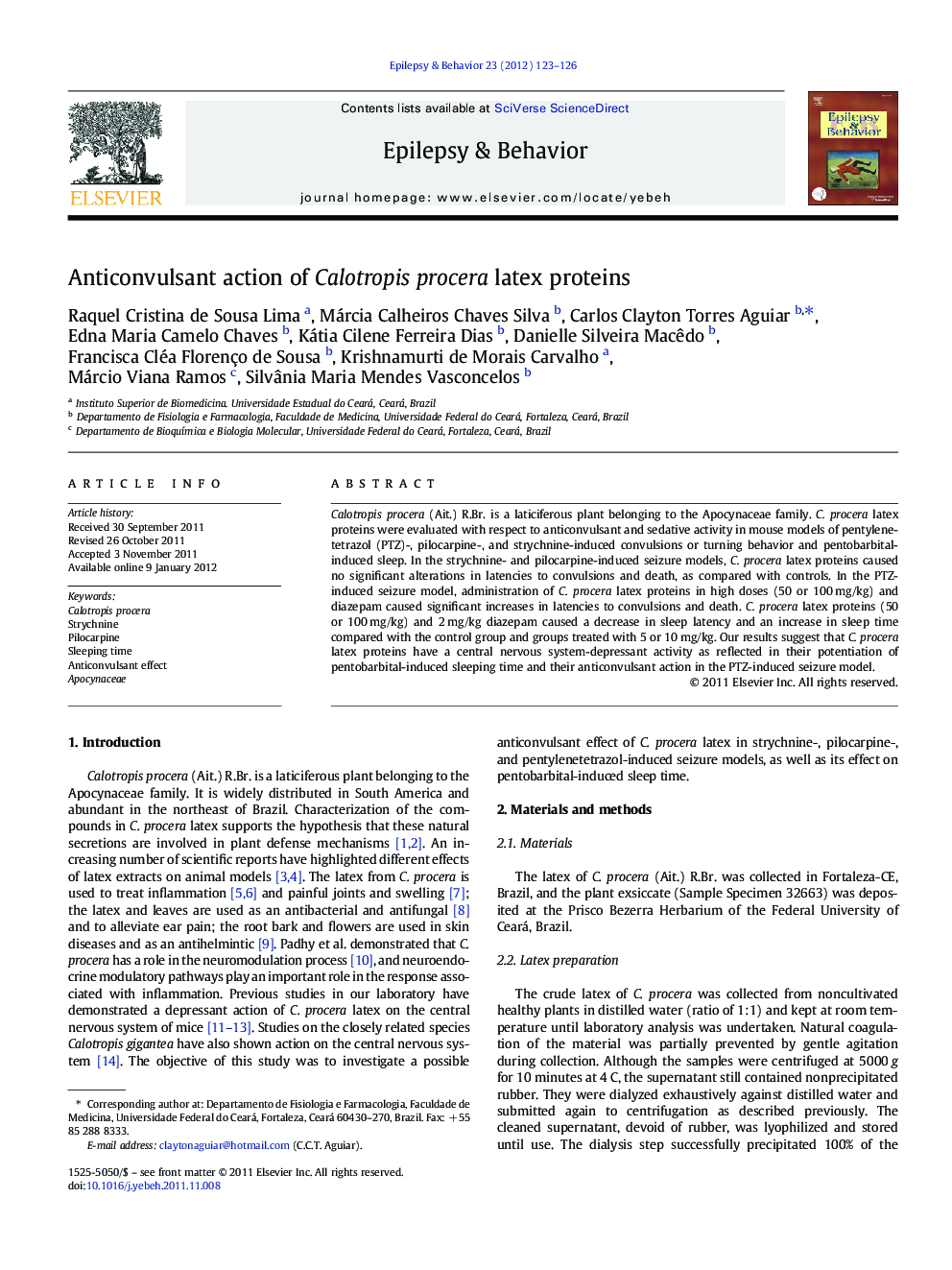| Article ID | Journal | Published Year | Pages | File Type |
|---|---|---|---|---|
| 3049847 | Epilepsy & Behavior | 2012 | 4 Pages |
Calotropis procera (Ait.) R.Br. is a laticiferous plant belonging to the Apocynaceae family. C. procera latex proteins were evaluated with respect to anticonvulsant and sedative activity in mouse models of pentylenetetrazol (PTZ)-, pilocarpine-, and strychnine-induced convulsions or turning behavior and pentobarbital-induced sleep. In the strychnine- and pilocarpine-induced seizure models, C. procera latex proteins caused no significant alterations in latencies to convulsions and death, as compared with controls. In the PTZ-induced seizure model, administration of C. procera latex proteins in high doses (50 or 100 mg/kg) and diazepam caused significant increases in latencies to convulsions and death. C. procera latex proteins (50 or 100 mg/kg) and 2 mg/kg diazepam caused a decrease in sleep latency and an increase in sleep time compared with the control group and groups treated with 5 or 10 mg/kg. Our results suggest that C. procera latex proteins have a central nervous system-depressant activity as reflected in their potentiation of pentobarbital-induced sleeping time and their anticonvulsant action in the PTZ-induced seizure model.
► Calotropis procera latex proteins represent a result of the search for new anticonvulsants in naturally occurring plants. ► Latex proteins from the medicinal plant Calotropis procera have antinociceptive activity. ► The results suggest that C. procera latex proteins have central nervous system-depressant activity as reflected in their potentiation of pentobarbital-induced sleep time and their anticonvulsant action in the pentylenetetrazol-induced seizure model.
